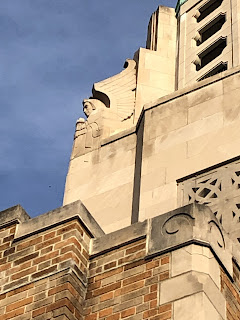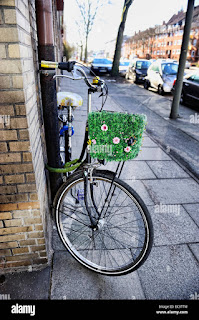During the past couple of days, it's been colder (in NYC) than it's been in, probably, a few years. Today is definitely a tomato-soup-and-grilled-cheese-sandwich kind of day. Now, to all of you dear readers in Minnesota and North Dakota, this might be a beach day (on Lake Superior? the Red River?). But you have to remember that those of us in the Big Apple, everything is bigger, brighter, dirtier, hotter, colder, and generally more intense, and everybody is tougher, stronger and smarter, than in any other place in the universe.
Of couse, I jested (Is that a real word?), but only somewhat, with my previous sentence. But like any true New Yorker, that's what I tell myself. And the tourist bureau wants you to believe stuff like that so you'll tell yourself that you'll never, ever come here--until you do. And you meet someone like yours truly. And someone else like me. (Yes, believe it or not, there such people.) And another. And another. Then you go home and tell your friends that everything in New York is bigger, brighter, dirtier, louder, more intense--and more expensive--but, you know, those New Yorkers are rude and gruff but they have hearts of gold.
My late uncle Joe was that kind of person. He was born and lived in Brooklyn until he was about 60, when he and my aunt moved upstate. He never lost his straight-out-of-Red Hook (I bawt a boddle uv alluv earl in da staw on toity-toid and toid*) accent--or his sense of humor and generous spirit.
I am thinking of him now because of a feature article in a local newspaper of a place I've never seen. Uncle Joe was an avid motorcyclist until he couldn't ride anymore. I don't recall him riding a bicycle but he talked fondly of the one he rode as an adolescent in the 1950s: a Schwinn Phantom, in black. He said the bike always "felt right:" in spite of its weight, "it moved." And somehow, he said, the gearing felt just right: "I felt I could pedal into anything!"
Now, perhaps that last exclamation had more to do with his youthful energy than the bike, or anything else--though, I must say, if his bike was anything like the two black Phantoms I've seen, he probably felt like a real badass when he rode it. I know, I probably would have, too.
Howard F. Gordon of Lower Burrell, Pennsylvania has one of those bikes. And, I would guess, another, perhaps in another color. And other bikes from that period, and earlier--over 100 of them!
From what I read in the article and saw in the accompanying photos, all or most of those bikes are of the balloon-tired "cruiser" variety made by Schwinn, Columbia and many other American companies until the 1960s. He calls his 1951 Monark "the Cadillac of bikes.
Even though he admits he has "too many" bikes, he's always on the lookout for new treasures, at garage and estate sales. "There are so many bicycles in garages and attics that are worth money," he explains. Whenever he buys a bike, he disassembles it and cleans every part before reassembling and restoring the bike to something like its original condition.
One of his more interesting observations regards the condition of the bikes he finds. Generally, he says, girls' bikes are in better condition because they were better cared-for. Boys, he observed, usually rode their bikes into the ground.
That observation is part of what keeps him interested in vintage bikes: the stories, known or imagined, by them. "Every one of those bikes had a rider who can tell you something about the adventures they took on it," he explains. "A bike is a kid's first feeling of freedom." Sometimes kids pedaled their bikes to places their parents never knew they went. (Can you see me and Uncle Joe winking to each other?)
In case you were wondering, Gordon rides. "My wife and I go on riding dates," he relates. "We stop for ice cream. We enjoy the nice weather. It's great exercise."
That sounds like a story behind at least one of his bikes!
*--Translation: I bought a bottle of olive oil in the store on Thirty-third and Third.
Photos by Louis B. Ruediger, for the Tribune-Review.




































